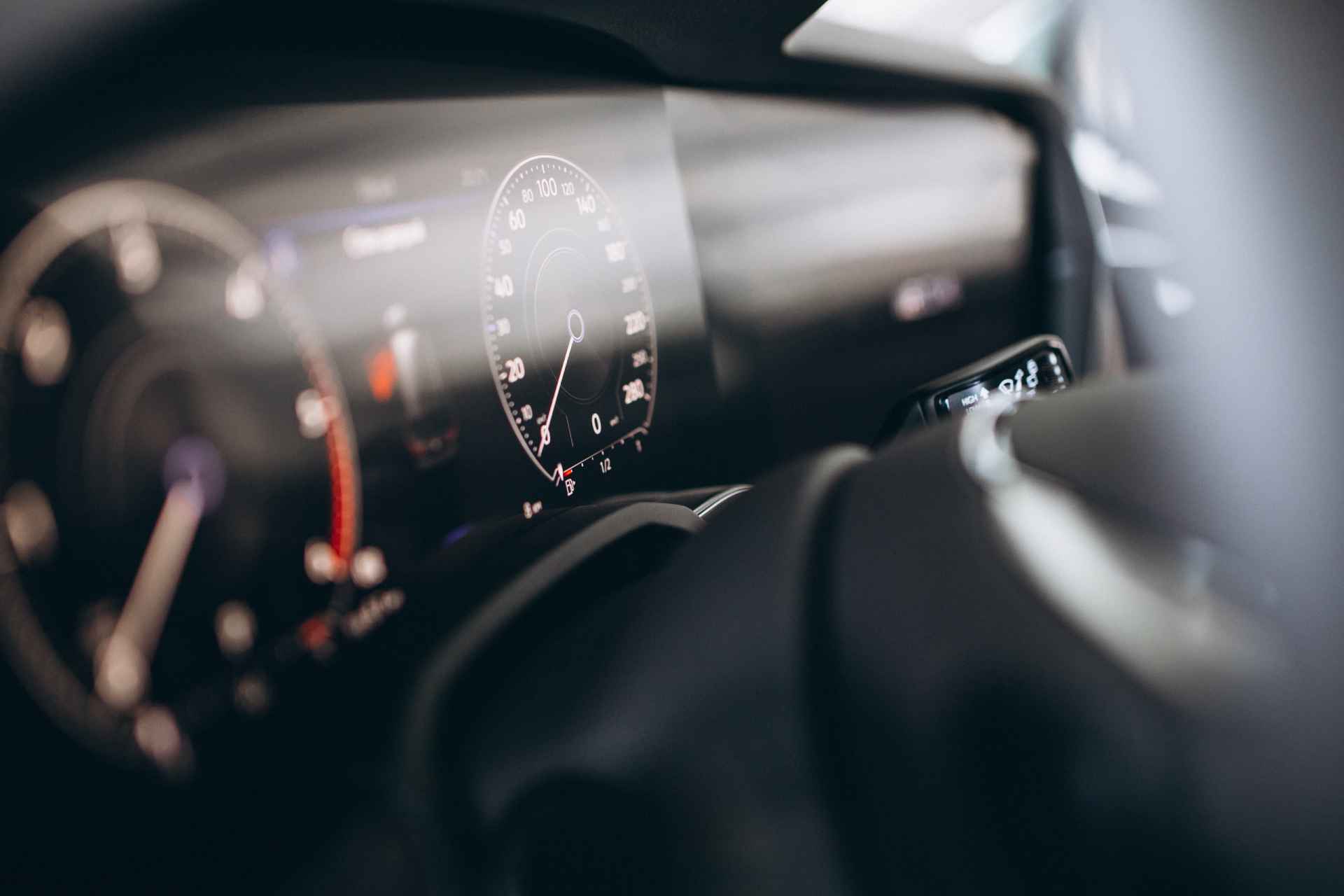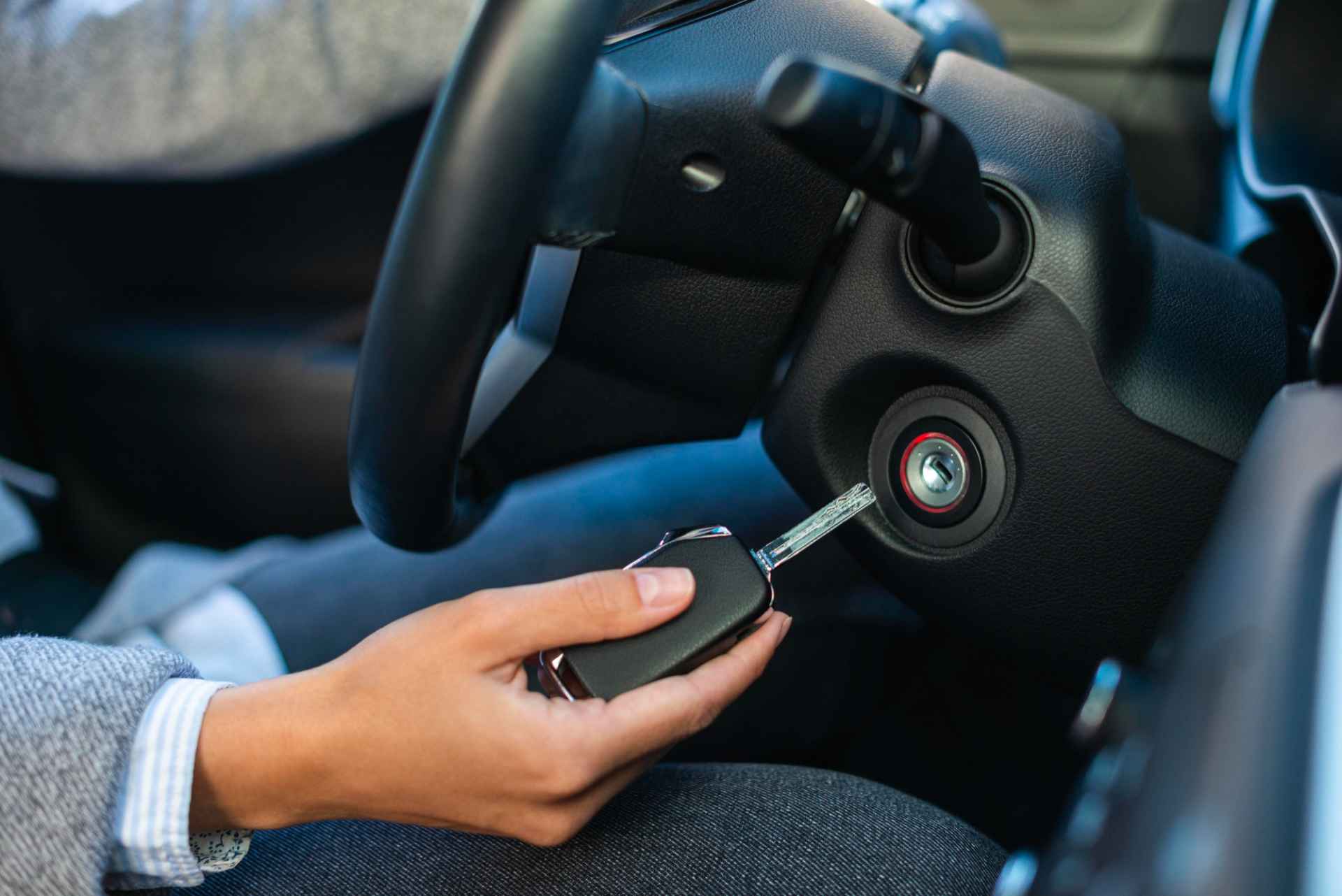- Our Firm
- Personal Injury
-
-
-
Personal Injury Lawyers
-
-
-
-
-
-
Injured in an accident? At Diamond & Diamond, our team of lawyers rely on their reputation in the field and extensive experience in personal injury to provide clients with a dedicated support system over the duration of their case.
-
-
-
-
-
HAVE YOU RECENTLY BEEN INJURED IN AN ACCIDENT?
-
-
-
- Corporate
- Class Action

How Modules and Sensors Keep Vehicles in Shape: The Key to Optimal Performance
When we think of computer systems and car automation, we often think of self-driving or autonomous vehicles. You might not be aware of this, but modern petrol-engine cars are becoming increasingly electric, featuring multiple control and monitoring systems that coexist to provide a comfortable, smooth, and safe ride.
Cars today feature a smarter engine control unit (ECU) and hundreds of electrical sensors scattered throughout the vehicle. Among other benefits, these automotive components constantly communicate with each other and execute various actions to help the car run at its optimal working condition.
Keep reading below to learn more about the ECU and how it provides motorists with an excellent and safe driving experience.
|
Key Takeaways
|
Understanding a Car’s Engine Control Unit (ECU)
The engine control unit (ECU), or electronic control module (ECM), which is also referred to as the powertrain control module (PCM), has become a crucial component in modern vehicles.
Generally, this system translates various data and makes the necessary adjustments to ensure a car’s optimal performance, and it controls functions, such as fuel injection, ignition, valve timings, idle speeds, and more. Newer ECUs also control safety features, like the anti-lock braking system and airbags, to make sure that they work at the right time when motorists need them.
The ECU features many of the same parts as an ordinary computer at home. Generally, it has hardware encoded with programs that help a car with most of its functions. It also has a microprocessor that receives, interprets, and answers any information from the many sensors it uses throughout the vehicle.
Data from such sensors allows the ECU to run diagnostics and take the necessary actions to address current and potential issues that the engine and other components may have.
Check out this short video from Diamond & Diamond Lawyers to better understand your vehicle’s modules and sensors.
The Importance of Sensors to a Car’s Performance
Car sensors are like the human body’s five senses, with the ECU being the brain. These sensors monitor various functions and communicate stimuli to the ECU, which then interprets such information and executes the necessary procedures to make sure that these changes don’t affect the vehicle’s performance.
If the ECU finds that it can’t do the action alone, it will notify the driver so that they can address it immediately. For instance, the ECU can’t add oil to the engine or air to the tires, so it will notify the driver by posting a sign on the dashboard so that they can take the necessary action.
Generally, car sensors can be categorized by the areas they monitor. These include motion, pressure, position, and temperature. With detailed functionalities and updated algorithms, sensors can detect even the slightest differences in the factors they observe. Once they notice an issue in these areas, the ECU will address it by making various modifications to the system.
Best Sensors To Have and What They Do
Modern cars have various sensors provided by the original equipment manufacturer (OEM), which means that they come with the vehicle upon purchase. These sensors help the ECU maintain a high-quality and safe driving experience.
Below, we’ve listed some of the most common sensors that are found in cars today.
Engine oil level sensor
Engine oil is a crucial component that ensures engine longevity and efficiency. For instance, it helps lubricate the engine’s moving parts to reduce damage caused by friction.
It’s also important to prevent any sludge buildup that can clog the narrow passages in the engine and hinder its performance. Without quality and clean oil, all the mechanical parts in the engine will wear out and become corroded, leading to costly repairs and replacements.
Today, modern cars have a sensor that helps detect engine oil levels to prevent these issues. This sensor measures the engine’s oil levels and ensures that they’re at an optimal level so that the engine can safely operate.
Generally, once the sensor detects that the engine oil is lower than the optimal level, a warning light will illuminate the dashboard, telling motorists to add more. Thanks to this sensor, the ECU can reduce engine bay wear, which can prevent other issues, such as overheating.
Coolant temperature sensor
To perform well, car engines generate high amounts of heat, and you can prevent damage to the engine from excess heat with a cooling system. The cooling system is a network with various moving parts, such as the radiator, water pump, cooling fan, pressure cap, and thermostat.
Generally, these components help circulate coolant, which is a special fluid that absorbs the extra combustion heat and achieves the proper operating temperature the engine needs. If this system fails, the engine will immediately succumb to the extreme heat it generates.
The coolant temperature sensor is a vital monitoring device that helps measure and determine the temperature of the coolant mix in the cooling system. It constantly communicates with the ECU to make the necessary changes to ensure the engine runs at an optimum temperature.
Some of the actions the ECU might perform are modifying the fuel injection timing, altering the ignition timing, and controlling the cooling fan to achieve such an effect. In some newer cars, this sensor shuts off the engine once it reaches a temperature level beyond the normal operating range.
Anti-lock braking system (ABS) sensor
The ABS is a relatively new technology that reduces the chances of road accidents when motorists lose control of their vehicles. This device prevents the wheels from locking up when a driver slams on the brakes and gives them complete control over their steering wheel. It’s a helpful safety feature that helps motorists avoid obstructions and prevent skidding or driving off slippery roads.
Generally, the ABS is a wheel sensor that senses if the car suddenly decelerates or if the wheels are about to lock. When this device detects such an issue, it will relay the information to the ECU, which will then activate the ABS and allow the driver to maneuver the steering wheel better to avoid any accidents.
Vehicle speed sensor (VSS)
Monitoring speed has become more intelligent in newer cars. With the VSS system, the ECU can adjust various engine functions, like ignition timing, air-to-fuel ratio, and transmission shift points, to maintain high performance and to make sure that the vehicle is operating safely on the road.
Basically, the VSS acts as a wheel speed sensor and measures the transmission/transaxle output. Without this device, the vehicle could malfunction in various ways. For example, the speedometer will provide wrong readings, and transmissions will have performance issues.
Moreover, the VSS complements other safety features, such as the ABS and the electronic stability control (ESC). The ESC is responsible for helping motorists maintain control of their cars during tricky steering maneuvers, like dodging various road obstructions.
Tire pressure sensor
Poor tire inflation can negatively affect a car’s performance and endanger motorists. For instance, depending on several factors, low tire pressure can lead to a blowout and accidents.
A vehicle could swerve and collide with other cars or suddenly stop and become a road obstruction, which could result in minor to fatal injuries. Low tire pressure can also harm a car’s fuel economy. With underinflated tires, vehicles use more fuel to maintain adequate performance.
The good news is that tire pressure gauges are widely available to help motorists determine how well their tires are inflated. In fact, most modern cars have a tire monitoring system that notifies drivers if their tires are losing pressure.
The tire monitoring system is becoming increasingly available on modern vehicles. This device observes all four tires and tells the ECU if any have low pressure, prompting the ECU to notify drivers through the dashboard so that they can have them re-inflated.
Airbag sensor
Airbags have become a mainstay as one of the best car safety features today. They’ve saved thousands of lives worldwide by reducing the extent of injuries and saving lives. Without this device, motorists will suffer life-threatening injuries after an accident.
The airbag sensor may be a small electronic device, but it plays a significant role in activating this safety feature. This sensor is designed to respond to various stimuli, like sudden stopping and increased pressure or compression from a collision. It can quickly send a message to the ECU in less than a second, so the system knows when to deploy the airbags and protect the driver and passengers.
Car parking sensor
Parking is a challenging step for many beginner motorists. Fortunately, as automotive technology has advanced, driver assistance systems, like car parking sensors, are becoming widely available to help new drivers park their vehicles.
When parking, these sensors help motorists by detecting various obstacles and measuring their distance from the car. With an auditory alarm, the parking sensor notifies drivers if an object is too close to the vehicle. Its warning typically comes in beeps that get more intense when the obstruction gets closer.
Generally, the parking sensor is typically located on the back of the vehicle to assist drivers in reverse parking. Many vehicles are also equipped with reverse cameras to complement this sensor.

Mass air flow (MAF) sensor
The air-to-fuel ratio (AFR) helps the engine achieve the perfect balance between the amount of air and fuel that enters the engine’s cylinders during combustion. It’s important to ensure excellent engine performance, control, and tuning, as well as to prevent toxic exhaust emissions.
The MAF sensor helps measure the air coming through the engine intake. This device continuously monitors airflow and communicates with the ECU to help the system adjust and optimize the AFR to achieve optimal engine performance.
Intake air temperature (IAT) sensor
The IAT sensor is a crucial component that helps determine and monitor the air entering the engine. Due to this sensor, the ECU can easily calculate how much gasoline the engine needs to operate at the current air temperature. This allows the system to make the proper measurements for quality air-to-fuel mixture.
This device is so important that when it malfunctions, it can cause severe issues with the vehicle. Without the IAT, a vehicle will experience a drop in acceleration, rough idling, misfires, faulty wiring, and numerous other mechanical issues.
Oxygen sensor
As mentioned above, the air-to-fuel ratio (AFR) is a vital indicator that helps the engine achieve the perfect combination of air and fuel that enters the engine’s cylinders. The oxygen sensor, or O2 sensor, is an essential device that lets the ECU know if the fuel mix is burning rich (not enough) or lean (too much) oxygen so that it can change the AFR and ensure that the car runs at an optimal rate.
Moreover, modern vehicles feature the catalytic converter (CAT) device. The CAT transforms or converts harmful engine emissions, like carbon monoxide and numerous nitric oxides, into less toxic gasses, changing them into carbon dioxide and water vapour. The O2 sensor also informs the ECU of the CAT’s performance while driving.
Knock sensor
Detonation, or knock, is among the many alarming sounds you shouldn’t ignore. It’s a pinging sound heard from the engine compartment during acceleration and throttle tip-in.
It could trigger various internal damage, including cracked piston rings, melted spark plug electrodes, rod bearings, and blown head gaskets if it persists.
Many factors, such as problems with detonation timing, air-to-fuel mixture, rod bearings, belt accessory, and fuel octane, could trigger engine knocking. Experts advise motorists to take their foot off the pedal immediately after hearing such a sound to prevent further damage.
The knock sensor is a critical component to prevent detonation from causing further damage to the engine. It takes note of the vibrations that the knocks create. Once it detects any alarming sounds, it will send signals to the ECU processor, prompting it to correct the anomalies, particularly in the air and fuel mixture.
Unfortunately, the ECU can’t fix all issues that trigger a detonation or knock. Therefore, if you detect this sound, taking your car to a mechanic would be the best thing to do.
Crankshaft and camshaft sensor
The camshaft and crankshaft work together to ensure that the vehicle performs well while driving. The camshaft is responsible for opening and closing the valves through combustion, and the crankshaft takes the energy from that sequence and connects it throughout the vehicle.
Working together brings various benefits to a car, including power generation, valve timing and efficiency, engine balancing, and reduced friction. They also contribute to an engine’s overall reliability and longevity.
The crankshaft and camshaft sensors are two different components that tell the ECU where each device is. Knowing the exact position of these sensors will enable the ECU to conduct the many functions mentioned above and more, including fuel injection and ignition timing.
Throttle position sensor
The ECU is responsible for ensuring that all moving parts of the vehicle coordinate with each other with precise timing. These include modifying the throttle performance for better fuel economy and engine efficiency. The ECU can do so with the throttle position sensor by providing the proper air and fuel mixture data.
This sensor monitors how wide the throttle valve (or blade) has opened, which is generally determined by how far the driver has pushed the accelerator pedal. Plus, it keeps track of the air flowing into the engine’s intake manifold.
The throttle position sensor communicates such data to the ECU to help it determine the fuel injection rate and balance the air-to-fuel ratio.
Without this sensor, there’s no way for the ECU to identify the amount of fuel needed or the proper ignition timing. If that happens, a car could experience various issues that could be very dangerous for motorists, such as stalling, erratic idling, and acceleration surges.
Brake fluid pressure sensor
Many beginners don’t know that it takes more than stepping on the brake pedal to stop their vehicles. The brake fluid is a chemical used in the hydraulic braking system of modern cars. It’s designed to amplify a foot’s force on the brake pedal and convert it into pressure to achieve adequate braking force. Without it, motorists would struggle to stop their cars immediately.
Low brake fluid pressure indicates a problem in the system, which could’ve stemmed from using poor-quality brake liquid or leaks. The ECU can detect these issues through the brake fluid pressure sensor and immediately notify motorists through the dashboard.
Manifold absolute pressure (MAP) sensor
An inlet manifold is an engine component responsible for supplying and distributing the proper air and fuel mixture to the cylinders. It works closely with the air intake, throttle body, and fuel systems to make sure that the engine burns the correct mix of air and fuel for better performance.
As the name suggests, the manifold absolute pressure (MAP) sensor is vital for monitoring the pressure within the component. It calculates the pressure inside and outside the compartment to help ensure that the engine receives adequate fuel even if there are changes in pressure. This sensor is vital to helping the ECU generate the perfect fuel injection ratio, further balancing the air-to-fuel mixture.
A defective MAP sensor will hinder the ECU from correctly calculating engine load, which means that the air-to-fuel ratio could become either too rich or too lean.
What Happens When The ECU Fails
As mentioned above, the ECU is a vital control system that makes the vehicle run smoothly and safely. To tell you how important it is, we’ve listed below the common issues motorists could face when the ECU fails.

Poor engine performance
Many sensors provide crucial information on engine functions, particularly in fuel combustion. This means that a faulty ECU may hinder a vehicle’s fuel consumption, making the car accelerate poorly on the road.
Moreover, the vehicle might experience rough idling because of poor fuel conditions. The car would sometimes shake and vibrate, especially if motorists try to go uphill.
Bad gas mileage
A busted ECU may also lead to too much fuel consumption. Since the system won’t understand the current air-to-fuel ratio data from various sensors, it won’t know how much fuel it should send to the combustion chamber. When that happens, the ECU may send too much fuel to burn, and the car will use more than the average amount, leading to costly and frequent refuelling.
Misfires, stalls, and other issues
Once the ECU fails, it will begin misinterpreting various data and it will feed the engine false information. When that happens, the engine will not be able to perform properly and it will experience sputtering, misfiring, and rough idling.
In other cases, the ECU will completely lose control of the vehicle and cause it to stall. This scenario is dangerous, especially if motorists drive on a highway or near an intersection. For instance, when their car suddenly stops in the middle of the road, there’s an increased risk of rear-end collisions and other vehicular accidents.
Meanwhile, misfires and stalls don’t always indicate an issue with the ECU. This means that it will take a lot of work to determine the root of the problem. If it persists and you don’t address it, you could be involved in a fatal accident.
Another issue you might face is that if you don’t fix any recurring problems caused by a defective ECU, you could become liable for causing an accident on the road.
How To Detect Issues in the ECU
The dashboard features warning lights to help notify motorists of any issues with the vehicle. The check engine light is one of those indicators, which typically illuminates if there’s a problem with the car’s engine. These problems range from faulty spark plugs, malfunctioning oxygen sensors, and issues with the catalytic converter.
If the check engine light remains on while driving, there’s a good chance that the car is experiencing a faulty ECU. Once this indicator illuminates, you must immediately take your vehicle to a mechanic to check your engine and ECU and make the necessary repairs or replacements.
Aside from this, there’s no straightforward way to identify if there’s an issue with the ECU. For instance, engine misfires are caused by various reasons, such as worn spark plugs, malfunctioning ignition coils, and vacuum leaks.
Meanwhile, a stalling problem could stem from a lack of fuel or improper ignition. When thinking about these issues, a faulty ECU isn’t the first thing that comes to mind. That’s why identifying problems in the control system could be challenging for motorists.
If you encounter any of the issues above, you should always assume the worst. Take your car to a repair shop immediately for a check-up. You might find that a simple sputter while accelerating could have started from a defective ECU.
The ECU is a smart component that helps modern cars drive well. Treating your vehicle correctly, especially while driving, is one way to ensure your system’s longevity. Driving your car too fast or rough doesn’t just harm your engine and the body, but it could also damage its many crucial components, like the ECU.
Pro Tip
Understand Every Vehicle Component
Modern technology has a prominent grasp on today’s automotive industry. With the ECU and various sensors, manufacturers can provide motorists with high-quality performance and a safe driving experience. These components work tirelessly to deliver crucial functions that drivers and passengers hardly notice when they’re in the vehicle.
As smart as they are, these modern components are susceptible to damage. Ignoring any issues could lead to dangerous situations, like stalling, which can increase the chances of being involved in a car accident. Aside from dealing with a wrecked car, motorists must deal with the legal process of identifying who’s liable for the incident, which is always stressful.
It’s best to talk to a personal injury lawyer if you’re involved in a car accident. Visit Diamond & Diamond for quality legal advice on vehicular accidents and more.
Being involved in a car accident is a challenging process to go through. Consult with our legal experts at Diamond & Diamond to build a strong case after a collision.
Need a Lawyer?
We are here 24/7 to address your case. You can speak with a lawyer to request a consultation.
1-800-567-HURTGet started with a free consultation
OUR TEAM
- Ishmeet Sandhu
- Nolan Bachmann
- Annamarie Demaj
- Jeffrey Hum
- Tofunmi Adeyeye
- Alessia De Gasperis
- Amandeep Chawla
- Jeremy Tsoi
- Kimiya Razin
- Shir Zisckind
- Gray Sinden
- Shelly Bard
- Christian Brown
- Daly Canie
- Tanveer Sohal
- Prianka Virdi
- Noah Brownstone
- Justin Kaminker
- Harinder S. Bhatti
- Craig Yargeau
- Kiran Birk
- Amit Singh
- Andrei Teju
- Maria Zahid
- Matthew Douglas
- Jacob Elyk
- Harry Gill
- Kristina Olivo
- Egi Bano
- Cam Woolley
- Charles Thompson
- Alexandra McCallum
- John Sime
- Allan Cocunato
- Patrick Poupore
- Erika Henderson
- Marina Korshunova
- Brandon Handelman
- Regeena Alapat
- Ryna Kim
- Natalia Poliakova
- Isaac Zisckind
- Manpreet Bhogal
- Mathura Santhirasegaram
- Nikolai Singh
- Sandra Zisckind
- Jeremy Diamond
- Michael Blois
- Darryl Singer
- Nadia Condotta
- Tinashe Madzingo
- Megan Armstrong
- Veronica D’Angelo
- Corey J. Sax
- Scott Tottle
- Steven Wilder
- TJ Gogna
- Jillian Carrington
- Joshua Himel
- Simon Diamond
- Cory Rubin
- Simon Mariani
- Brandon Greenwood
- Basil Bansal
- Nastassia Ivanova
- Tania Fleming
- George Laloshi
- Patrycja Majchrowicz
- Diana Iakossavas
- Dior Africa
- Alex Ragozzino
- Liana Saccucci
- Richard J. Chang
FAQs How Modules and Sensors Keep Vehicles in Shape
How many sensors do modern cars have?
The engine alone has around 15 to 30 sensors, monitoring various areas, like the cooling system and air intake. Meanwhile, a car can have a hundred sensors installed to monitor multiple factors inside and outside the vehicle. These sensors will vary depending on the model of the vehicle.
Can you add more sensors to your car?
Yes. Aside from the OEM sensors that come with the vehicle, drivers can add more sensors to their automobiles.
As mentioned above, not all sensors are available in all cars. Some manufacturers offer different units of the same model with more sensors at a higher price.
Meanwhile, motorists can also have aftermarket sensors installed in their cars. Some of the best examples of these products include blind spot warnings, engine diagnostics, and navigation, or GPS.
Will car modifications affect the ECU?
Since there are various aftermarket sensors that car owners can use, you must be careful when adopting aftermarket modifications.
Car manufacturers don’t always approve of aftermarket modifications. If they do, it’s always limited to upgrades that’s approved by them.
Aftermarket modifications typically involve altering engine components and adding performance-enhancing parts. For these changes to work, the ECU must be reprogrammed or tuned so that the system and sensors understand the new moving parts within the vehicle.
Motorists should consult with professionals and use reputable products to make sure that they integrate the proper modifications without affecting their vehicle’s safety and performance.
NEED A LAWYER? CONTACT OUR TEAM TODAY
Chat Now
OR CALL NOW FOR A FREE CONSULTATION
 1-888-INFO-LAW
1-888-INFO-LAW
Head Offices
Main Offices
Barrie
Main Office
168 Bayfield Street
Calgary
Main Office
1331 Macleod Trail SE, Suite 645
Edmonton
Head Office
4246 97 Street NW, Unit 103
Halifax
Consultation Office
1701 Hollis St
London
Main Office
256 Pall Mall St, Suite 102
Oshawa
Consultation Office
50 Richmond Street E, Unit # 108 B
Ottawa
Main Office
955 Green Valley Crescent, Unit 315
Sudbury
Main Office
31 Larch Street, Unit 300
Timmins
Main Office
120 Cedar Street South, Unit 002A
Toronto
Head Office
255 Consumers Road, 5th Floor
Vancouver
Head Office
1727 West Broadway, Suite 400
Windsor
Main Office
13158 Tecumseh Rd. E. Unit 3B
Additional Areas Served
Ontario
- Ajax
- Alberta
- Aurora
- Barrie
- Belleville
- Bowmanville
- Brampton
- Brantford
- Brockville
- Bracebridge
- Bradford
- Burlington
- Burnaby
- Calgary
- Chatham
- Cobourg
- Collingwood
- Cornwall
- Durham
- Edmonton
- Elliot Lake
- Etobicoke
- Georgetown
- Guelph
- Hamilton
- Huntsville
- Kanata
- Kelowna
- Kingston
- Kitchener
- Leamington
- London
- Markham
- Milton
- Mississauga
- Muskoka
- Niagara Falls
- Newcastle
- Newmarket
- North Bay
- North York
- Oakville
- Orangeville
- Orillia
- Oshawa
- Ottawa
- Owen Sound
- Parry Sound
- Perth
- Peterborough
- Pickering
- Prince Edward County
- Richmond
- Richmond Hill
- Sault Ste Marie
- Sarnia
- Scarborough
- St. Catharines
- St. Thomas
- Stouffville
- Sudbury
- Surrey
- Thunder Bay
- Timmins
- Toronto
- Uxbridge
- Vancouver
- Wallaceburg
- Waterloo
- Welland
- Whitby
- Windsor
- Woodstock













